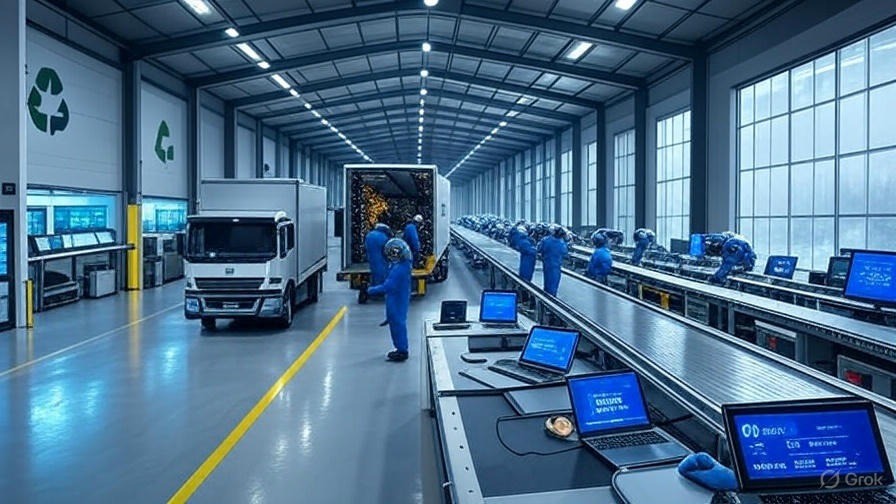
28 May The Loading Dock Doesn’t Lie — Why Circular Logistics Must Start with the End in Mind
Published: 05/28/2025
In the world of returns, every extra mile a product travels is a silent cost – not just in emissions or shipping fees, but in trust. Trust that the right thing will be done with that product. Trust that it’ll get a second life, not a slower death in a warehouse backlog. Paul Baum has spent 25 years listening to the loading dock, not the marketing deck, and what he hears is this: most companies are still stuck in linear thinking, even when the returns are piling up.
As CEO of PlanITROI and founder of Nextra Tech, Baum is doing something refreshingly simple: he’s treating returned products like they matter. His “one box solution” skips the grand tour of middlemen, distributors, and stock rotation rules. That returned laptop, phone, or server? It goes straight to one of his facilities – think a high-tech pit stop where it’s tested with OEM software, refurbished, regraded, and resold directly to the next user. No warehouses gathering dust. No fake circularity. Manual return processes cost retailers an average of $20 per item in handling fees, per a 2025 Forbes report. Baum’s model slashes that by cutting unnecessary stops, saving money and roughly 0.7 kg of CO₂ emissions per return, according to a 2022 Pitney Bowes study.
That next user isn’t a mystery, they’re mapped by millions of data points gathered over decades of direct-to-consumer drop shipping. Picture a student in a rural zip code upgrading to a refurbished MacBook, a small business owner snagging a server for their startup, or a family grabbing a like-new phone at half the price. These are Baum’s people. They don’t want a second-rate product – they want a second-chance product. One that’s been tested, cleaned, cosmetically loved back to life – scratches buffed out, screens repolarized – and shipped with an 18-month warranty, not an apology.
Take a returned gaming laptop, for example. In a traditional system, it might bounce between a retailer, a distributor, and a refurbisher, racking up $50 or more in handling and transport costs and, potentially, weeks of delay. In Baum’s world, it lands at a Nextra Tech facility, gets a full diagnostic, a cosmetic refresh, and ships to a gamer in under a week – complete with a warranty and a story of reuse, not refuse.
This isn’t theory. It’s happening now. At their new “Center of Excellence” in Youngsville, North Carolina, Baum’s team is training 30 global partners to replicate what works: fast intake, smart grading, AI-powered receiving that cuts backlog from seven days to near zero, and repair methods that boost both margin and meaning. A 2025 industry report notes that AI could improve logistics productivity by up to 40% by 2035, and Baum’s betting on that to make every return count. Circularity here isn’t a slogan — it’s operational excellence with a conscience.
But here’s the truth that stuck with me: not all circular models are created equal. Bulk wholesale has its place – it keeps assets in use and fuels the reuse ecosystem. But when products are anonymized, palletized, and shipped off without a clear destination, something gets lost: control, care, and often, value. Baum’s model isn’t just about circularity — it’s about intentional circularity, where every item is tracked, refurbished with precision, and drop shipped directly to the next user with its quality – and dignity – intact.
Nextra Tech was built to scale this vision without the short-term pressure of traditional private equity exit timelines. It’s a buy, build, and hold model designed for longevity, not liquidation. It proves there’s margin to be made when you invest in doing things right the first time – and the second time too. With global e-commerce returns projected to approach $1 trillion by 2026, per a 2024 Zeta Global forecast, Baum’s approach is a playbook for turning a liability into an opportunity.
Returns don’t have to be a headache. In the hands of someone like Paul Baum, they’re a roadmap – not just back to value, but forward to trust. And in a circular economy, trust is the currency that counts.
To read full article, visit The Loading Dock Doesn’t Lie — Why Circular Logistics Must Start with the End in Mind



No Comments